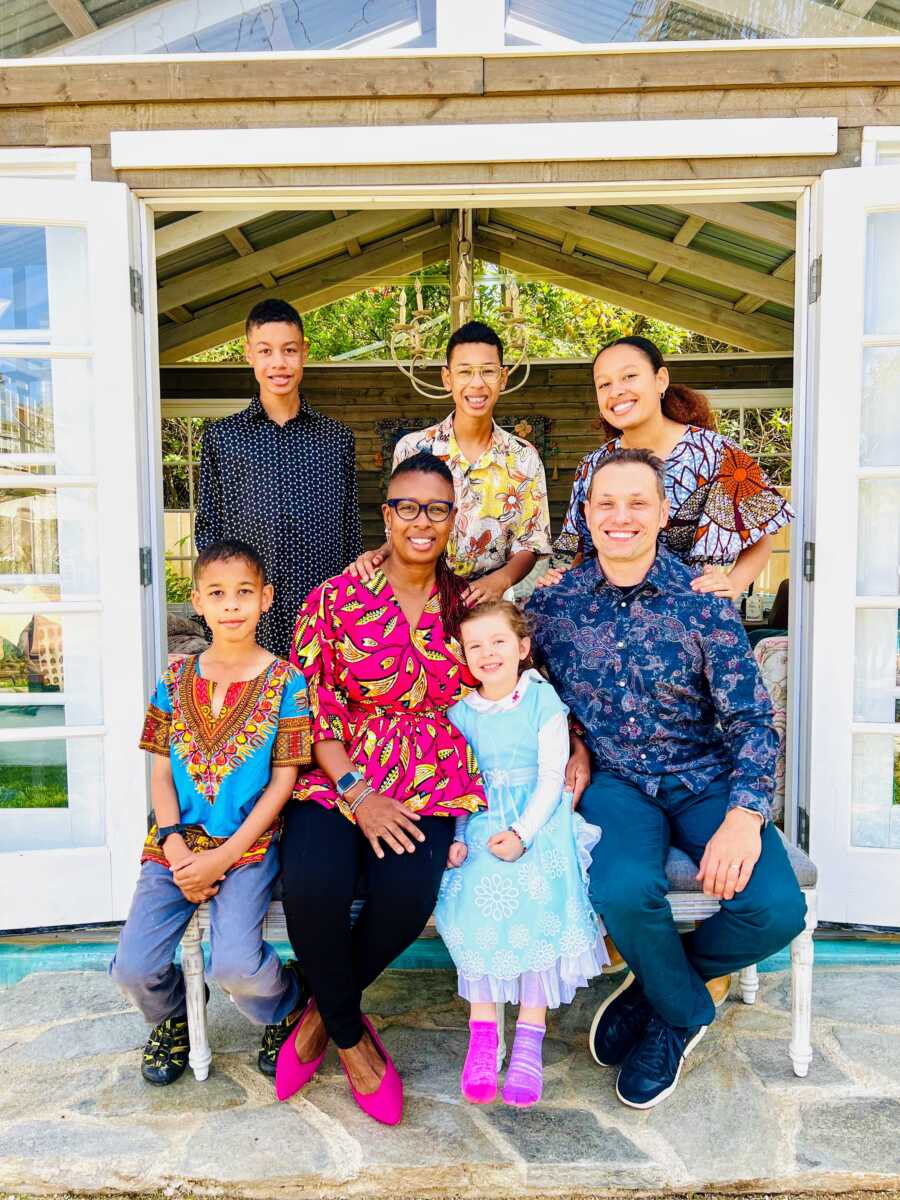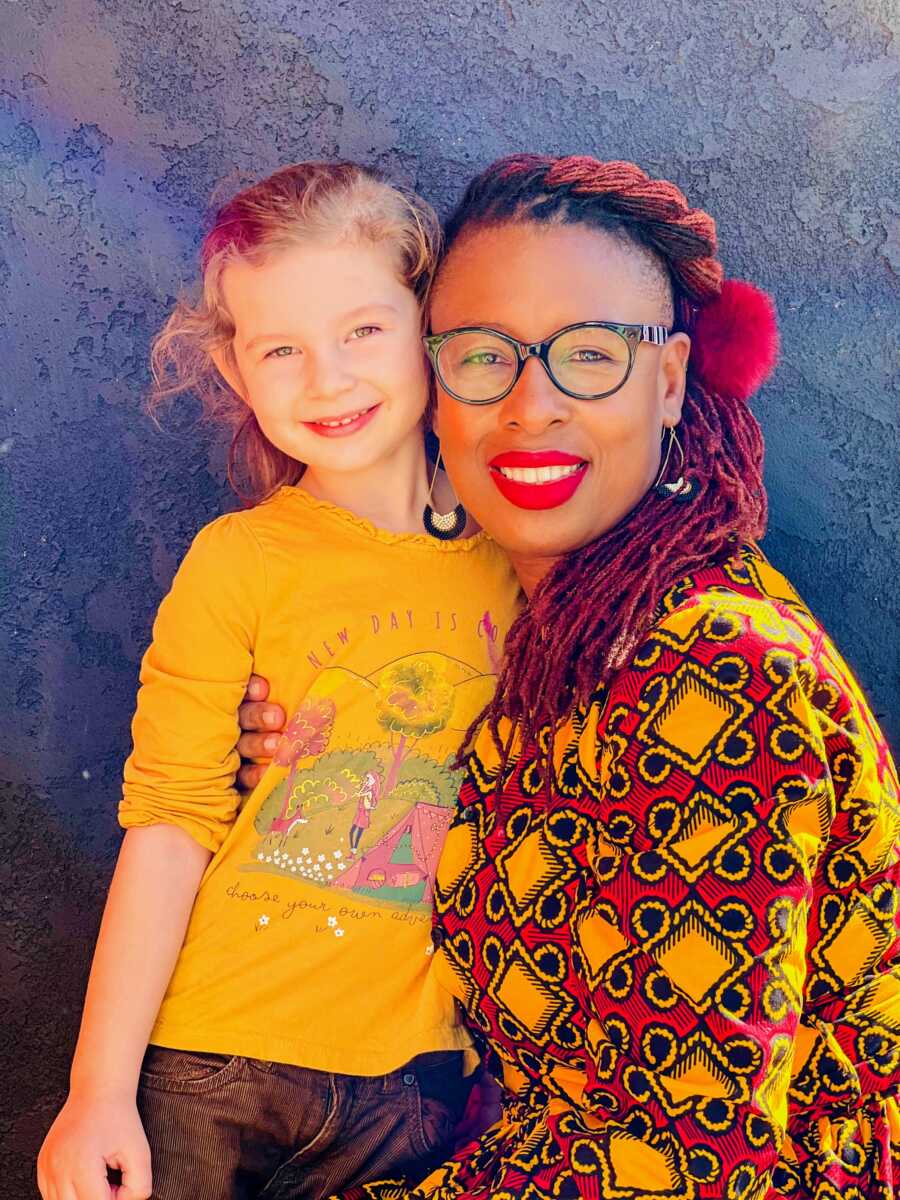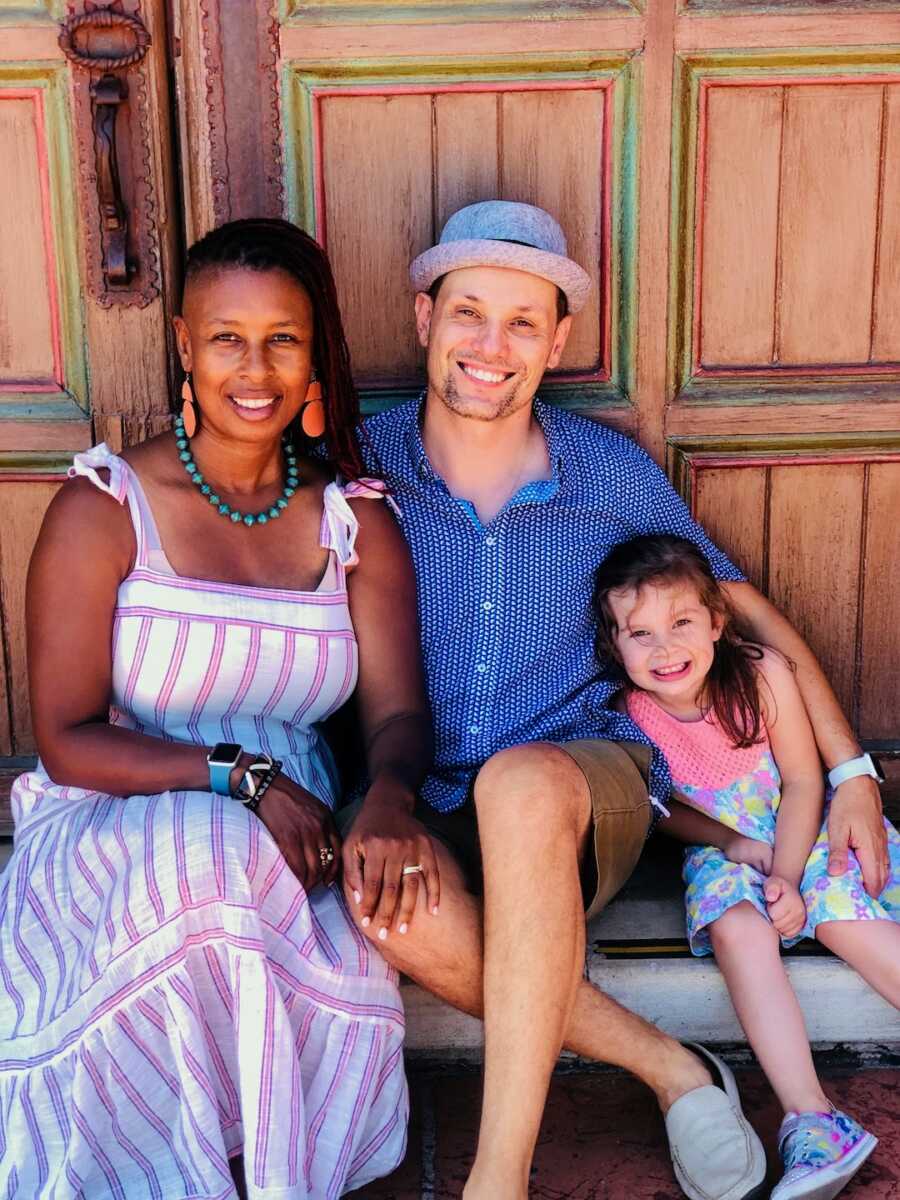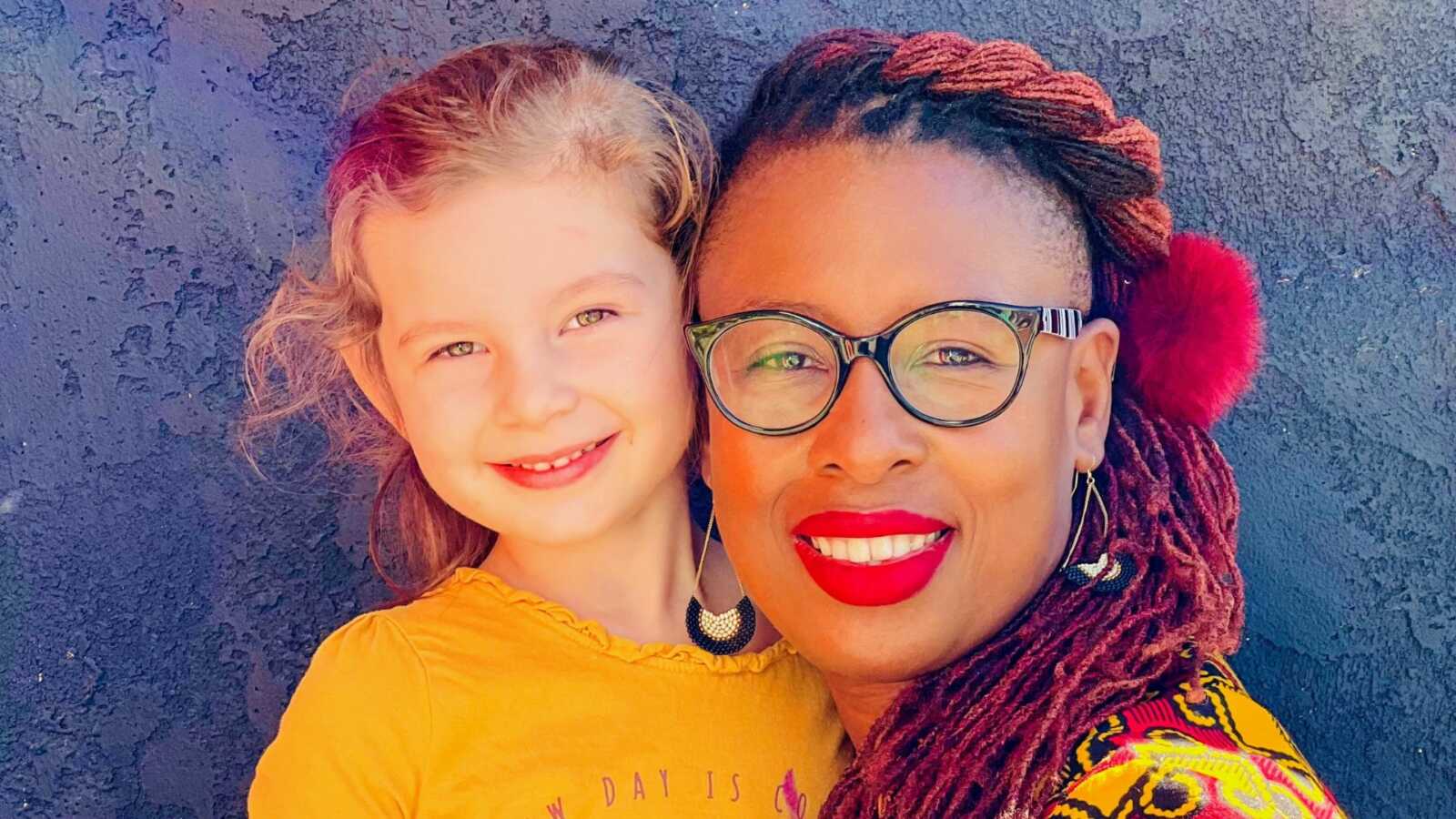My husband and I always felt like adoption chose us. We were already a large family raising 4 children. The journey for us began when our then 6-year-old daughter told us we were going to adopt her little sister.
We were resistant at first, as we were already a large family and did not see many families like ours (with a black mother, white father, and 4 biracial children going on to adopt a child).
It felt scary as we didn’t know much about the world of adoption, and neither of us came from cultures where adoption was very prevalent. But we were open. Over time we began to embrace what felt like a calling for our family. We knew our family was not complete.
As we learned more about adoption, and the question of open versus closed adoption came up, we felt it was really important for us to have an open adoption. We were able to lean into our own stories to come to that decision.
I, Francina, from Zimbabwe, and my husband, from Poland, had such deep grounding in knowing where we came from. The cultures and traditions from both of our individual cultures informed how we showed up in the world and what was important to us as we raise our children.
We knew from the beginning that we wanted that same sense of knowing and grounding for our baby via open adoption. We wanted her to know where she came from, who her people were, what they looked like, where she got her features and temperament.

What is open adoption?
To us, open adoption is a choice to be open to more love and connection. It is having a relationship with the birth family on the terms that feel comfortable for both families. It’s an opportunity to welcome and embrace more love for the adoptive child and the family they comes from.
It is a willingness to be vulnerable, to let people you don’t know into your life. It is a willingness to grow together and share the most important gift: the life of a child who did not choose the circumstances of their family life.
Open adoption is laying down ego and picking up humility. It is recognizing that there is no room for judgement if you want love and connection to grow. It is setting healthy boundaries in love.
Open adoption is always carrying the tension between joy and grief. Joy for the life of a beautiful child and grief for the loss that adoption represents for the birth family.
I carry this tension always because it raises my empathy for our baby’s birth family. They endured loss for me to gain the joy and privilege of raising this little girl. Open adoption is hard and beautiful all at once.
What is closed adoption?
A closed adoption means you have no contact with the birth family of the child you adopt. You don’t share pictures, correspondence, or have an ongoing relationship with the birth family. It also means your child can have very little information about where they come from, who their birth family is, and what the circumstances were pertaining to their birth.
Benefits of open adoption
1. Relief for birth family
Our baby’s birth mother has expressed to us so many times how grateful she is for us. How happy she is that she chose us for her child, and how glad she is that her daughter has such a good life. I know that her ability to be connected to us and see her child grow up puts her at ease.
I will never forget walking into the hospital room and seeing our baby’s birth mother crying. She kept repeating, ‘Tell her that I loved her; tell her that I didn’t give her away because I didn’t want her.’ We had no doubt in our minds that our little girl was so loved and continues to be loved.
2. More family
Our family expanded once we adopted her, as her birth family is also part of our family. This is a bonus for everyone.
3. More love
We are all immersed in more love and that is always a win. Our little girl is growing up surrounded by so much love.
4. The child can connect with their roots
We have been able to take our baby back to the state she was born and have her meet with her birth family, and that was a very powerful experience for her and us. It was amazing to watch her instantly connect with her birth family even though she was only two years old at the time.
Disadvantages of open adoption
1. Unpredictable communication
It takes work to maintain a relationship with the birth family, and you don’t have control over when you hear from them. We send regular updates and pictures, but sometimes can go for several months without hearing back from the birth family. The birth family may stop communicating and that can be hard for the adoptive family and child. This can be especially hard if your child is older and they start to wonder what happened to the people they felt connected to.
2. Setting boundaries
The birth family may want more contact than the adoptive family feels comfortable with. Sometimes the birth family may want to visit and even come to your home when you don’t feel ready. If you don’t feel ready, it is okay to communicate that.
There is a risk that it could cause a distance to develop with the birth family when you put up a boundary. It is important to remember that all relationships are a dance and both parties grow together. You have to be very patient and always lead with love and kindness for them and for yourself as the adoptive family.

Benefits of closed adoption
1. Protection from toxic family members
If there is a safety risk to the adopted child because of an unstable relationship with the birth family, a closed adoption can help protect the child.
Disadvantages of closed adoption
1. Lack of identity
The child does not know or have a connection to where they came from.
2. Feeling unloved
The child could grow up wondering if they were loved by their birth mom and birth family.
3. No sense of belonging
The child could struggle with a sense of belonging.
4. Mystery
The mystery around the child’s birth family can cause a child to question their identity and value.
Tips for families beginning an open adoption
1. Talk to families who have open adoptions.
2. Know and be clear what is important to you.
3. Know what you feel comfortable with.
4. Remember you are entering into a relationship with the birth family. The relationship has to grow; take your time.
5. Trust your gut about what feels good and safe to you. Just because someone else wants something does not mean you have to do it if you are not ready.
6. Always communicate the story of your child’s adoption from a place of love.

Adoption is a beautiful and complicated journey and it is not easy. You are dealing with the life of a child that has a history and a family of origin that is part of them. And every child, birth parent, and adoption story is different.
Some stories are complicated and difficult. Remember honoring that history and family is so important for your adoptive child because you are actually honoring your child and their story.
I want my baby to look back on her life with us and look back on where she came from with nothing but joy, gratitude and pride. I want her to know she was always loved both by her birth family before and after we came into her life, and she was loved by us, her adoptive family. Knowing you are loved is an incredible life gift!
This story was submitted to Love What Matters by Francina Kahl. You can follow her journey on Instagram and TikTok. Join the Love What Matters family and subscribe to our newsletter.
Read more stories like this:
Do you know someone who could benefit from this story? SHARE this story on Facebook to let others know a community of support is available.


